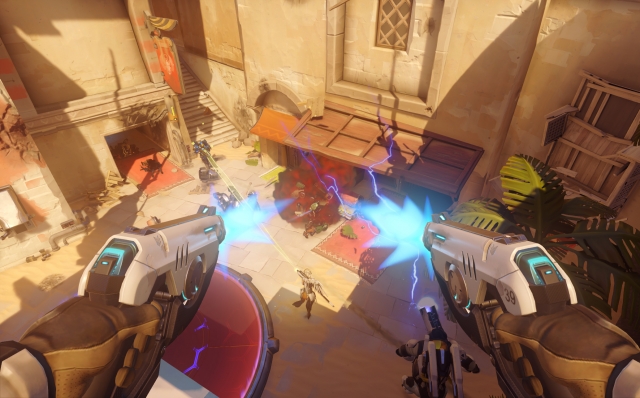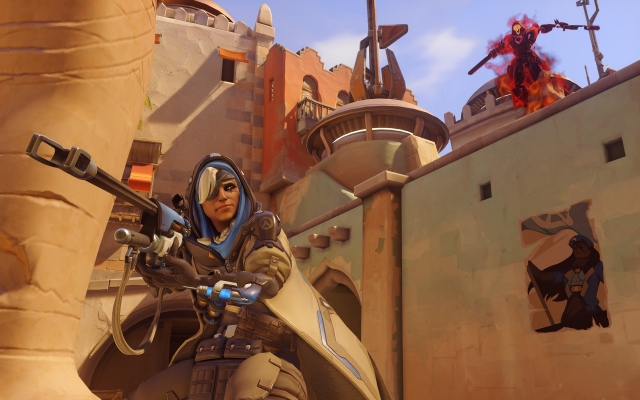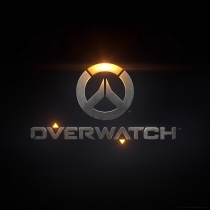
Overwatch Review
Some might say that Blizzard, the mega-developers behind some of the world’s largest games, has too much time and money on its hands. There are very few studios which can spend a long time performing research and development for a new MMO, creating a world, mechanics, animations etc. and then decide to just say “screw it, we’re making it an FPS.” In many ways, this grand flippancy gives Overwatch a charm and style that hasn’t been seen since Team Fortress 2.
It’s true, there is a lot of Valve’s uber-FPS to be seen in Overwatch, yet Blizzard’s title takes up the mantle of successor, not copycat. Set in a near-future where mankind is recovering from a damaging human-vs-robot calamity known as the Omnic War, a team of guardians - known as Overwatch (roll credits) - is recalled back into action to fight a new menace. There is an incredibly rich backstory to the title that, to be frank, doesn't even need to be there. The battles you play out across various gorgeous - and geographically varied - maps are strictly non-canon. Despite this there are hints, clues and easter eggs everywhere for those who followed the game’s build-up.
If Overwatch is anything, it’s a character piece, throwing the hero-specific focus of MOBAs into the FPS genre with abandon. The game launched with 21 heroes unlocked right from the start, with two more since being added. Blizzard has stated from the beginning that everything from the point of purchase is free - there will be no characters or maps locked behind DLC. The roster in Overwatch is as varied as it is diverse. There’s Reinhardt, the gigantic German hero clad in armour with a chivalry complex; Widowmaker, a French blue-skinned sniper-assassin in ridiculously tight spandex; Winston, a hyper-intelligent gorilla from the Moon and D.Va, a South Korean eSports pro who pilots a flying mech. Blizzard have clearly spent a very long time on character design, giving each hero an identifiable profile that makes it easy to discern one from the other on the battlefield. Praise should also be reserved for the voice actors in the game, who bring the heroes to life with gusto. When translated into the game no two characters play alike. Though they are grouped into four distinct class types (DPS, Defence, Tank, Support) heroes can be used in multiple roles if played correctly.

As a 6v6 competitive and objective-based shooter, Overwatch does something that very few in the genre have done. The game is not all about twitch-reactions and your ability to aim at a selection of pixels at the right time. Someone who knows how and when to heal and buff your allies is as crucial to a victory as one who can rattle off headshot after headshot. From a tactical standpoint the game is almost flawless - there are so many combinations of heroes that each game will have different challenges, different strategies for victory and different critical moments on which victory or defeat hang. Similarly, each character is not defined by their primary weapon - each are useful and powerful tools when used in the right situation but not your answer to every threat. This simple mechanic encourages players to experiment with other classes, to look at enemy team composition and think “okay, maybe I shouldn't play as this hero for now”.
Another major difference between Overwatch and other competitive shooters is the introduction of Ultimate abilities. During a game a hero will charge a meter in the centre of the UI. When filled the player can unleash a powerful one-use ability that can be used to destabilise the enemy team or boost your own. Much like the primary weapons of each class, when these ultimates are used right they can be devastating, yet there is always a counter for experienced players to exploit. Cyborg ninja Genji’s ultimate turns him into a whirling dervish of sword strikes and powerful attacks, yet he gains no extra health or armour. Every ultimate is accompanied by a loud voice line which every player hears, meaning as soon as you pop the ultimate you’re guaranteed to be the focus of attention (and weapons fire).
Team play in Overwatch is necessary. No one class can dominate a battlefield long enough to influence it, as the game’s nature means players will switch heroes at will to counter your picks. Creating synergy between your heroes is crucial and Blizzard have hidden subtle, discoverable hints as to which classes pair up well. Rocket-firing Pharah and healer Mercy, who are both able to fly, can hover above a battlefield raining death and keeping themselves stocked up. Walking machine-gun turret Bastion can set up behind Reinhardt’s shield to pepper foes without fear of counterfire. A Zayra can pull the enemy team together for a D.Va to self-destruct next to them. The combinations are near limitless and when pulled off create truly incredible gaming moments.

Overwatch released with 12 maps and has since added two more. Each are filled with luxurious detail and serve as both an arena for combat and a stage upon which players can discover more about the world the game is set in. Heroes will remark on the surroundings before a fight, while Blizzard’s borderline-obsessive levels of detail are everywhere to be seen, from posters on walls to the headlines of newspapers scattered around the floors. Overwatch’s maps, whether in King of Hill, Payload or Capture Point modes, are filled with nuance. Every map has at least one or two major choke points where teams will be forced to duke it out. Yet, around these chokes will be alternate routes for clever players to exploit - either around, above or below - meaning that games don't devolve into slugging matches over one piece of ground. Each map is designed specifically for its game mode - Route 66 will always be Payload and Hanamura will always be Capture Point - which means that each is tailored fully towards the mechanics of that mode. The journey through each is also fluid and streamlined - no matter where you find yourself the design points you either towards or away from the objective - it’s very hard to get lost.
This laser-focus means that Overwatch is light on game modes. At launch the title contained only Quick Play and Competitive modes, with a weekly “Brawl” that added crazy rules to a standard game. Blizzard, however, have listened to community feedback and now there is an “Arcade” section that features 1v1, 3v3, multi-hero and random hero modes to mix things up. The game’s meat and bones is still in the competitive side of things but the extra options can be a welcome thing to dip into when you don't have the time to devote to a competitive round. The lightweight feel of Overwatch is balanced out by its relative replayability, though it would be nice to see Blizzard continue to add maps and characters at a steady pace.
While designed to be a tight, team-based title with a ranking and score system that relies on heals, objective play, assists and synergy, Overwatch is still plagued by problems that crop up in other online shooters. Despite glowing yellow signs in the hero selection screen screaming “TOO MANY SNIPERS” you’ll often find players picking their favourite hero above what is tactically needed. In a game like Battlefield, having an abundance of snipers on a 32-man team isn’t too much of a burden but when you only have six it can ruin a round. Thankfully Blizzard has addressed the problem quickly by removing the ability to have multiples of the same hero. This quick-fix, though doesn’t stop players selecting heroes wholly unsuited to the needs of the map or mode.

The competitive side of the game is possibly one of its most exciting features. Rarely has a game arrived onto the scene with what feels like a ready-made audience wanting to watch pro players duke it out. Though the title is missing some key spectator features (mentioned to GameGrin in interviews with pro teams), its frantic pace, colourful characters and game-swinging abilities make it one of the most exciting FPS games to watch in years. When GameGrin attended MCM earlier this year there was barely room to move during the Overwatch finals. Considering that the game has only been out for a few months, it’s not hard to imagine what the support might be like in a year’s time.
Overwatch is a punch to the face for multiplayer shooters. It mingles quick-fix, objective-based gameplay with a deep tactical core and intelligent meta, forming a game that is simply perfect in short bites and thoroughly satisfying to play for hours on end. Blizzard has attacked a genre it knew little of with gusto, charm and undeniable style. While a little thin on the ground at launch, the developers have supported the title with new characters, maps and features and listened to player feedback. Overwatch simply feels like no other shooter on the market today, and looks to set the pace for years to come.
Overwatch (Reviewed on Windows)
Excellent. Look out for this one.
Overwatch is a punch to the face for multiplayer shooters. It mingles quick-fix, objective-based gameplay with a deep tactical core and intelligent meta, forming a game that is simply perfect in short bites and thoroughly satisfying to play for hours on end.









COMMENTS